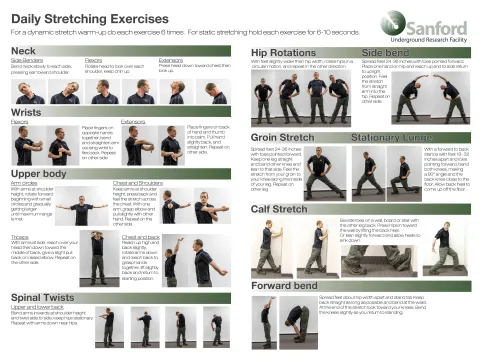Creating an ergonomic environment
From shuffling papers to operating a jackleg drill, every job has ergonomic implications.
From shuffling papers to operating a jackleg drill, every job has ergonomic implications. Excessive lifting, repetitive motion, working in awkward positions and even sitting or standing for a prolonged period of time can cause cumulative ergonomic injuries.
According to the National Safety Council, ergonomic injuries are disorders of the soft tissue, including the muscles, nerves, tendons, ligaments and spinal discs. Symptoms can include everything from posture problems and intermittent discomfort, to tendonitis, chronic pain and disability.
Creating a healthy workspace goes beyond ordering a comfy office chair—it means promoting an environment that works for your body, in other words is ergonomically correct. Efficient lighting, seating height, fitted shoes and even mouse placement can contribute to your workspace health.
At Sanford Lab, you can have your workstation reviewed by Jason Rosdahl, industrial hygienist, to make sure it meets the best requirements. Additionally, there are several steps you can take to create your very own ergonomic working environment.
At a desk:
Keeping your body confined to a desk for hours at a time poses ergonomic challenges. These can be overcome with regular exercise, good posture and consistent movement.
- Sanford Lab offers desks that alternate between sitting and standing heights. Ask for one to be installed in your office space.
- Frequent stretching is key, and there are certain stretches that specifically target desk-tired muscles (see infographic below).
- Take frequent breaks of short duration, at least every hour on the hour.
- Periodically, change job tasks.
- Exercise to help relax tight muscles, reduce stress and lessen the sense of general fatigue.
On-site tasks:
Overexertion during manual tasks can be prevented with careful planning of strenuous activity, paired with regular exercise, stretching and maintaining a strong core.
- Plan a lift before you begin, keep your back straight, lift with your legs and avoid twisting motions.
- Limit the amount of time you spend doing the same motion over and over.
- Take frequent breaks from any sustained position every 20-30 minutes.
- Report pain, swelling, numbness, tingling, tenderness, clicking or loss of strength to your doctor before it becomes a full-blown injury.
For more information on creating a healthy working environment, contact Jason Rosdahl at jrosdahl@sanfordlab.org.
